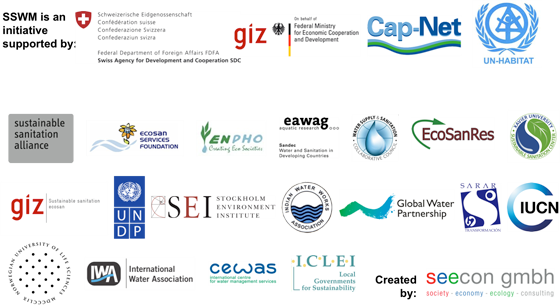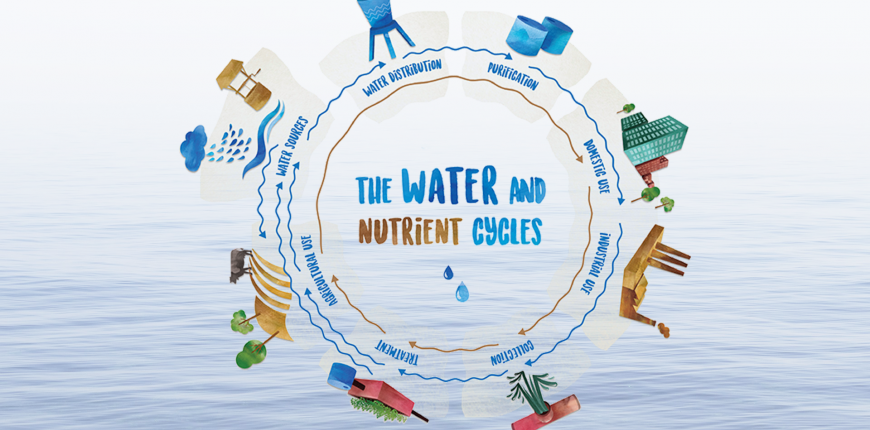The graph shows the water and nutrient cycles and how they are interlinked. It is a simplified and idealised version of the water and nutrient loop that puts humans at the centre. Water coming from water sources is purified, distributed and used in agriculture, households and industry. By using water for these different purposes, nutrients are introduced into the water cycle (e.g. through wastewater, but also in runoff in agricultural systems, etc.). Wastewater, in order to be treated, is collected. The treated wastewater is reused or used to recharge water sources. Nutrients are reused beneficially to produce food or animal feed, thereby not polluting aquatic ecosystems. In this way, both the water and the nutrient loop are closed.
The Water and Nutrient Cycle Perspective recognizes that sectoral approaches are not going to solve the global water and sanitation crisis. Instead, holistic approaches that consider the entire water cycle from source to sea, and that look critically analyse the human influence thereupon are required. It compiles the hardware and software instruments for each step of the Water and Nutrient Cycle, that help you develop a sustainable sanitation and water management system.
The content of this perspective was compiled by seecon gmbh in collaboration with a number of partners:




